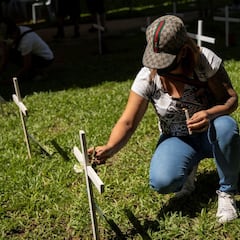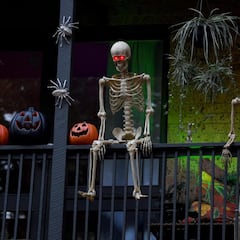What are the Dia de Los Muertos skulls called?
The 'Calaveras,' or skulls in English, are iconic representations of the Mexican holiday.

At Dia de los Muertos celebrations in much of Latin America, la calavera de azucar, or a ‘sugar skull’, is a common sight. The face masks are traditionally molded from sugar and decorated with glitter, feathers and anything else for the celebrations.
As the celebration has become more and more popular, these sugar skulls have been translated onto face paint, providing the perfect outfit for the occasion. The shared Catholic faith of Latin America brings with it a religious influence which is often displayed in the face painting, which is coupled with both traditional Aztec influences and European symbolism. The day itself was moved by Pope Gregory III to November 1 to suppress pagan religious festivals.
The image of a calavera most commonly associated with Dia de los Muertos now is that of La Calavera Catrina, a skeletal portrait of a high society lady. The image is thought to be taken from a 1910 sketch by Mexican artist Jose Guadalupe Posada and was originally intended to be a satire of the elitist upper classes of the early 20th century; the message being that we are all equal in death.
Explore NYPL’s José Guadalupe Posada Collection through “Las meras meras calaveras de Posada,” or “The Skeleton Caricatures of Posada,” a new installation celebrating the digitization of the Library's entire Posada collection. https://t.co/WcLKQKHDiP
— NY Public Library (@nypl) October 25, 2021
Why do people paint their face?
Related stories

What is All Saints Day and why do we celebrate it?
While a distinctly morbid tradition, the use of skulls is not a pessimistic representation. Rather, the fixation with death comes from Aztec tradition, in which the transition from life to death was a positive move away from the illusion of Earth.
Día de los Muertos, or Day of the Dead, unfolds in an explosion of color and joy demonstrating love and respect for lost loved ones https://t.co/spMWjAOhxZ
— National Geographic (@NatGeo) November 1, 2021
The festival is therefore a celebration of loved ones who of died, not a mournful act. It is unrelated to Halloween, and is less about fear and more about respect.
